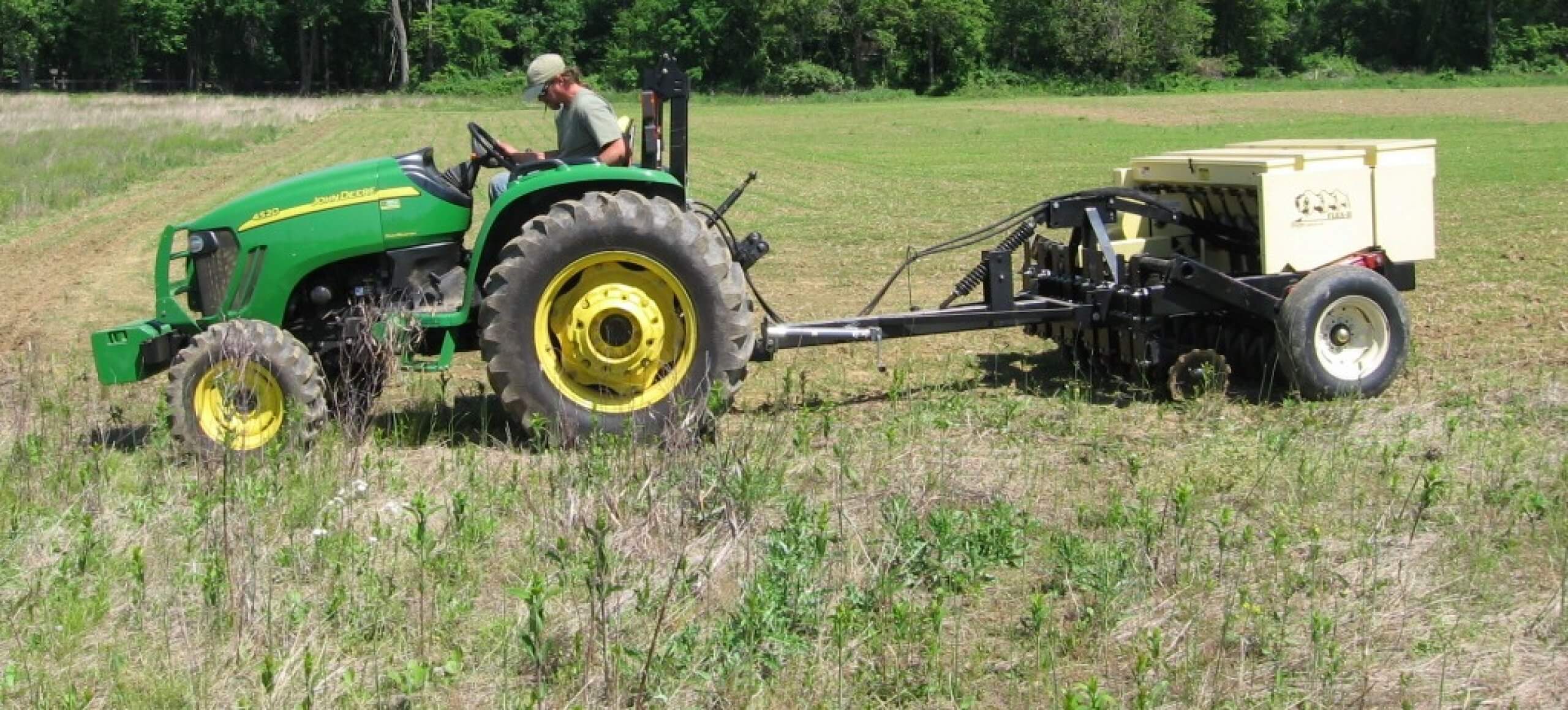In the early 20th century, population growth—which led to conversion of farmland into houses—and changes in farming practices caused a devastating ripple effect for birds and other wildlife that depend on open fields and meadows for survival. At many of our preserves we have been working to re-establish these once plentiful habitats by transforming crop fields to grasslands… one acre at a time.
With support from volunteers, we’ve planted hundreds of acres of native warm-season grasses, which are particularly valuable as nesting areas and food sources for birds like Bobolink, Eastern Meadowlark, and Eastern Bluebird—all of whose populations have been in decline nationally but are thriving on Natural Lands’ preserves.
The seeds are planted using a “no-till” machine attached to a tractor, allowing our staff to sow seeds quickly without turning the soil—a disturbance that can encourage the growth of invasive weeds and cause erosion. We also added native wildflowers like bee balm, Joe-Pye weed, and butterfly weed to diversify the meadows and establish food and habitat for bees, butterflies, and other important pollinators.

